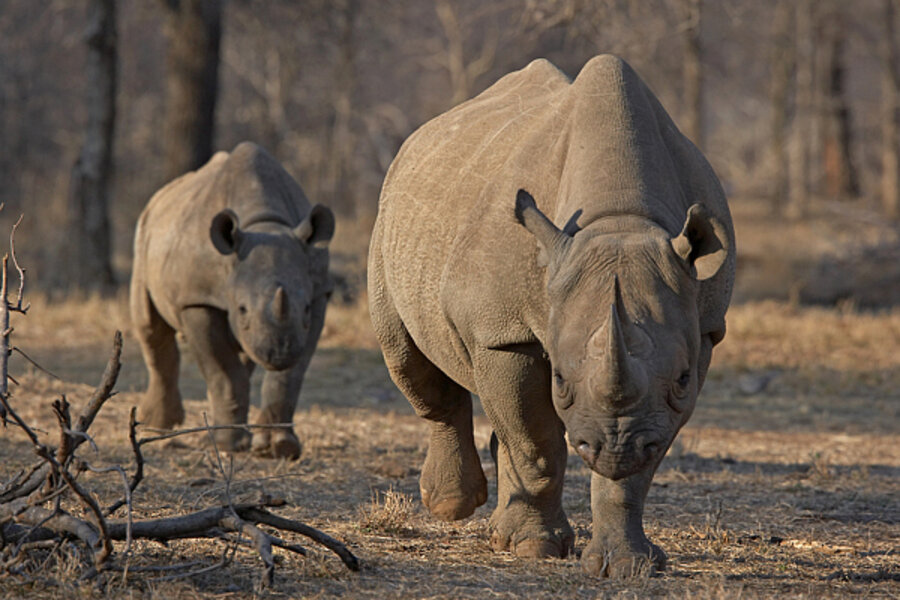South African and Vietnamese wildlife officials meet to stem rhino horn trade
Loading...
| Cape Town, South Africa
Wildlife officials from South Africa and Vietnam have held their first face-to-face meetings in Hanoi aimed at halting the trade in rhino horns, which has seen 232 animals slaughtered this year.
Conservationists say the Asian country is the biggest customer for poached horns stripped from the dead rhinos, which some Vietnamese believe can cure cancer.
Rhino horn, which can fetch up to $4,000 a pound on the black market, is used as a handle for daggers in some countries, and used throughout parts of Asia as medicine and as an aphrodisiac.
Poor customs regulations and a lack of political will have been blamed for allowing the illegal trade to flourish, which has led to a public outcry in South Africa. Pictures of de-horned rhinos have become a common sight in the media.
After growing international pressure, a five-strong government party from South Africa made up of police, national park and environment department officials is holding four days of talks with their Vietnamese counterparts to find solutions to the problem. Although no one expects the meetings to lead to an immediate drop in the smuggling, most observers agree that it's an important first step toward stemming the trade.
“The Vietnamese agreeing to talks and acknowledging there is a problem with poaching is a significant first step," says Dr. Richard Thomas from the wildlife trade monitoring network Traffic, which organized the trip. "There is a lot of evidence to say the horns are being smuggled to Vietnam so it’s important that there is joint co-operation between the governments.”
Increased demand in rhino horns
So far this year, 232 rhinos have been killed in South Africa for their horns, compared to 122 last year and 81 the year before.
“Poaching has become extremely sophisticated," says Mr. Thomas. "Poachers can dart a rhino, chainsaw off its horn, and helicopter it off in a matter of minutes. It can end up on the Asian market within 30 hours.”
The Asian rhino population in Vietnam has been seriously depleted, partly because of poaching says Traffic.
But there is still a healthy black and white rhino population in Africa with South Africa holding an estimated 90 percent of the 21,500 total.
STORY: After half-century absence, Black Rhinos fly home to Serengeti
Conservationists point to Kenya where the rhino population collapsed from 20,000 in 1970 to around 600 now, as a worst case scenario unless poaching is curbed.
Cooperation is key
"[The rhino horn trade] is being driven by crime syndicates which can only be tackled by close government cooperation," says Faan Coetzee, a rhino conservation expert at the Endangered Wildlife Trust in South Africa, has helped co-ordinate the top level meetings. "They earn a lot of money out of horn smuggling so it’s them you need to tackle, not the foot soldiers on the ground.”
"The Vietnamese seem serious about dealing with illegally poached ivory," says Mr. Coetzee. "We want to see a greater commitment to stopping the horns from getting into the country and laws against possession of [rhino horn]. Once it gets into the country, it just slips away and it’s difficult to trace. There needs to be better intelligence between our police and theirs and regular contact between governments. Having the first face-to-face meetings is important because once you’ve made contact and got a name, you develop a relationship."
Thomas, however, cautions that the talks are only an initial move toward a solution.
“Traffic isn’t anticipating any quick-fix overnight solutions, but we’re very pleased that direct dialogue between the two countries on the rhino horn poaching issue has been opened," he says. "This is an important step in building a long-term relationship between the two nations that will ultimately lead to a successful curtailing of the poaching crisis.”





